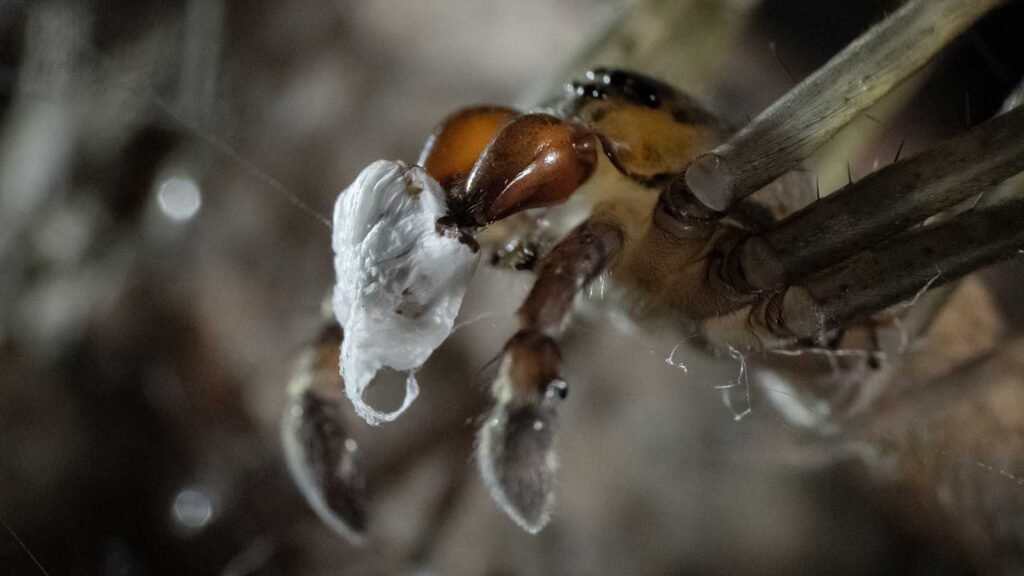[ad_1]
Courtship dazzle in spiders can lose some zing in unsure climates. Males in locations with hard-to-predict rain and temperatures devolve into suitors who woo largely with low-cost, ineffective presents.
Researchers have described reward giving in courtship in solely 15 or 20 of the world’s greater than 50,000 identified species of spiders, says evolutionary biologist Maria José Albo of Universidad La República in Montevideo, Uruguay (SN: 7/26/16). Since 2015, she and her lab have targeted on spiders that flirt largely in evenings and nights among the many rocks and pebbles of rivers of Uruguay and southern Brazil.
When the brown male Paratrechalea ornata senses a feminine to woo, he picks some object to spin silk round for courtship presentation. Males’ our bodies are solely in regards to the dimension of peppercorns suspended on legs, so the presents are “very, very small,” Albo says.
The perfect of those presents are nuggets of contemporary insect meat a feminine can feed on whereas a male inserts sperm. The extra time she spends opening and consuming her reward, the extra sperm he can ship. That abundance might assist as sperm in her reproductive tract from numerous males compete for dad-hood.
So it was shocking when, whereas monitoring spider silk-wrapped presents at six places in Uruguay and Brazil, Albo and colleagues discovered some pitiful snacks on supply.
The primary Albo opened was … a seed. That’s ineffective for a spider. Their mouthparts work extra like milkshake straws, however for meat-shakes. Over years of monitoring courtship presents, Albo and colleagues have discovered a bunch of equally unsnackable presents: damaged shards of insect exoskeletons, bits of plant stems and so forth.
At two research websites, greater than half the presents analyzed had been inedible silk-wrapped trash, Albo and colleagues report in The American Naturalist November concern. What these two trash-gift zones for courtship had in widespread, the researchers say, is low predictability in rainfall and temperature.
In locations with extra surprises and stresses, maybe with extra floods or out-of-whack insect-prey cycles, spiders have many different challenges. So possibly what’s wrapped up inside aggressive presents simply isn’t as necessary anymore. Gifting persists, however sexual choice primarily based on what’s inside has “relaxed,” as biologists put it. Among the many many implications, Albo says, the weakening of a courtship sign “reveals how variation in local weather, can have an effect on one thing very important — which is copy.”
Additionally, it’s “positively attainable” that the mercurial climate might change not simply contents of males’ presents however the necessary silk wrapping, says behavioral ecologist Michelle Beyer, of Ludwig-Maximilians-Universität München in Germany. She wasn’t a part of the South American research however works with Europe’s best-known gift-giving counterpart, the nursery net spider Pisaura mirabilis. Reward-giving males of species on each continents dope their silk with compounds that in a roundabout way improve fatherhood.
“It’s positively attainable,” she says, that rain or excessive temperatures might change the composition of the silk in addition to the size of time the males’ doping compounds final on it. Plus, the silk street of data runs each methods. Analysis is already beneath method on the feminine silk of the European species, she says, to see if spinnings by heat-stressed females keep their standard attraction to males.
[ad_2]
Source link
